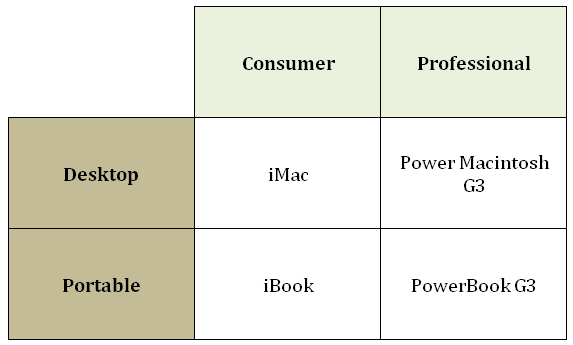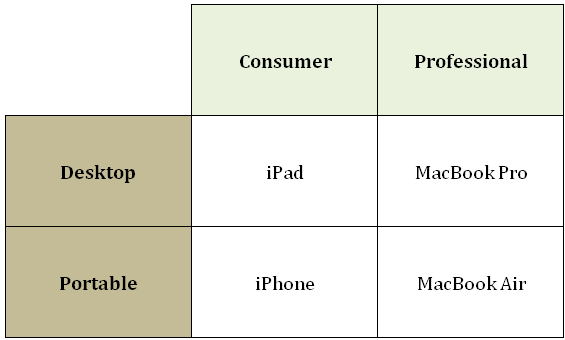Complexity distorts information flow and decelerates clear decision-making. Any decision made in the face of complex operations, unnecessary product types or models are increasingly incoherent. Companies that do well have a sense of clarity and focus with less complex operations and product lineups.
Companies whose business models are simple can replicate their successes repeatedly. Apple’s co-founder Steven Paul Jobs (Steve Jobs) realized this quite early. At the MacWorld Expo in 1998, Steve revealed a four-quadrant product grid. Upon his return to Apple, Steve toured the company and found that there were far too many teams working on the Mac. Each team had different names and viewpoint of the Mac in mind and lacked coherence. He came up with the idea of a simple four-quadrant grid with two rows labeled as ‘Consumer’, ‘Professional’, and the columns as ‘Portable’ and ‘Desktop’. This way Apple engineers and managers had to focus on only four core product areas and the company could deploy the best engineers in the right area. Additionally, there would be no product or resource overlap. Even the naming convention seems simple e.g. ‘i’ in consumer products and ‘Power/Mac’ in professional products.

A newer grid today might look like this:

Recent examples of companies reducing product complexity are Google, HP and MTV. Google has retired many products. In a recent conference call in Feb 2012, HP’s CEO Meg Whitman emphasized the need to trim down its many products models, SKUs and configurations and to remove unnecessary complexity from designing to manufacture and delivering products. MTV India, the music channel is shifting its focus back on music and reducing non-music format shows.
